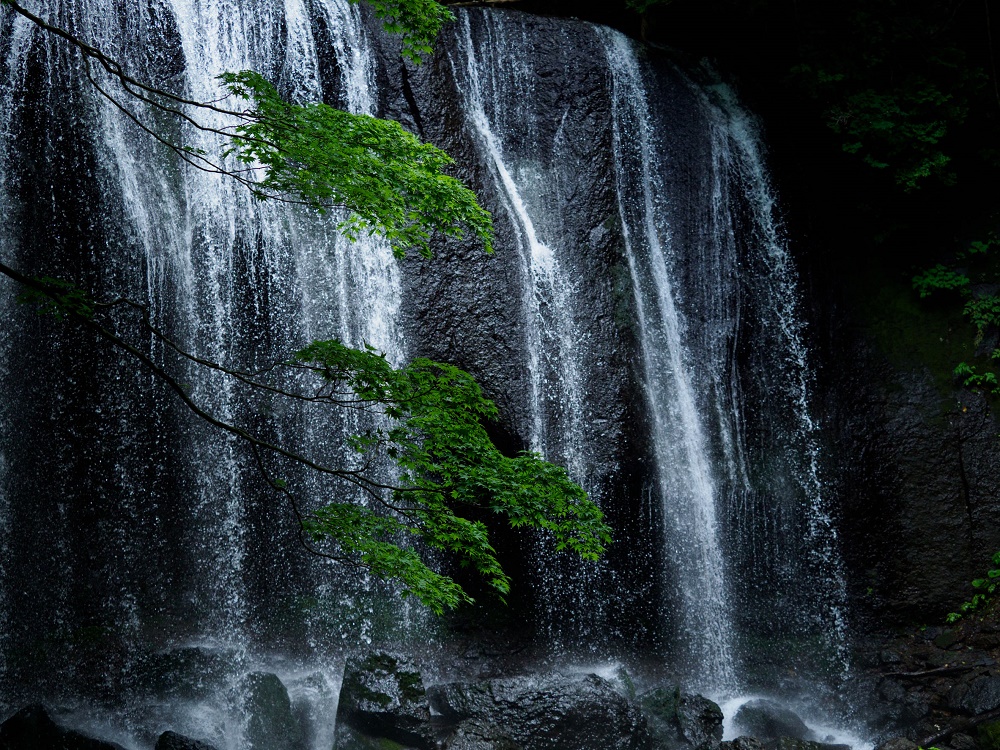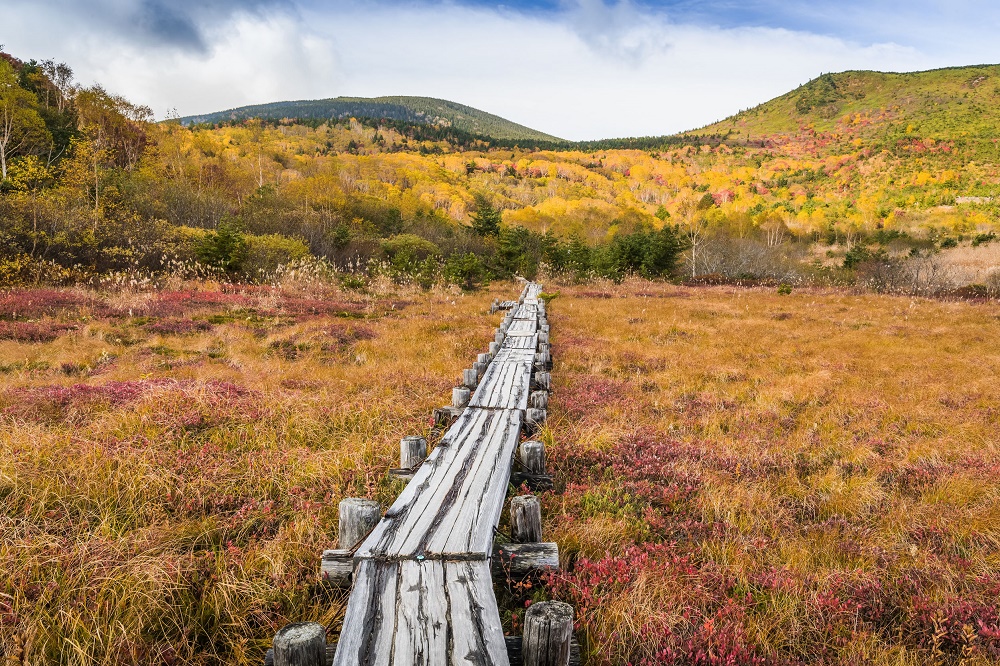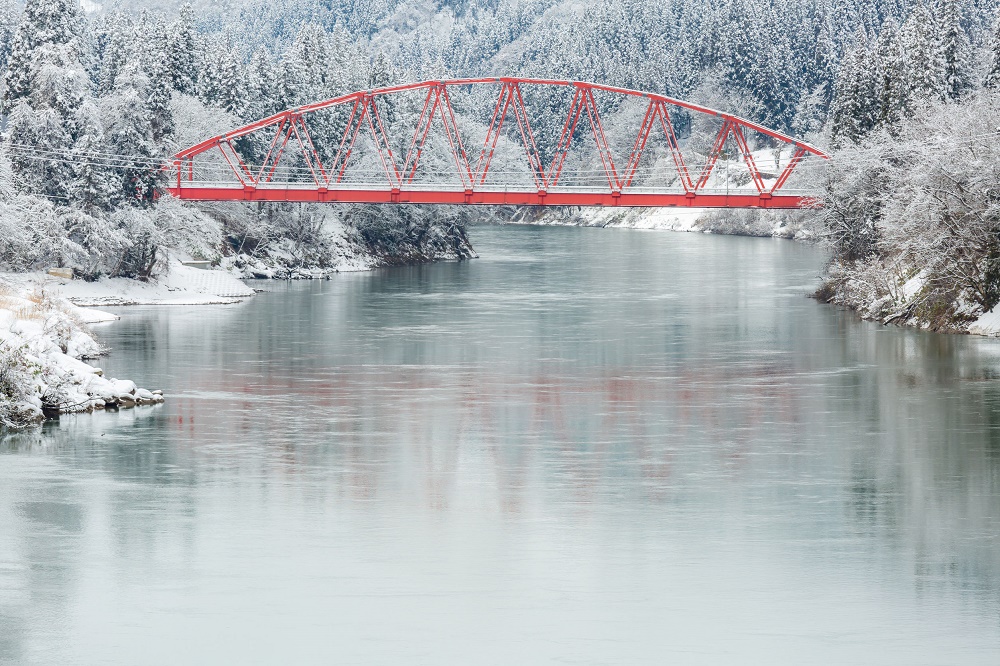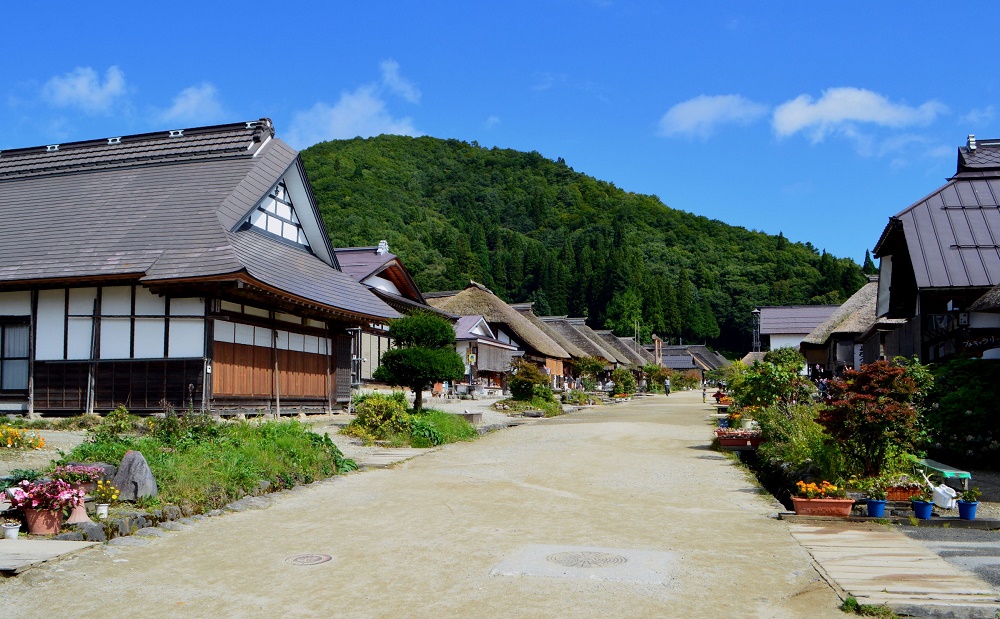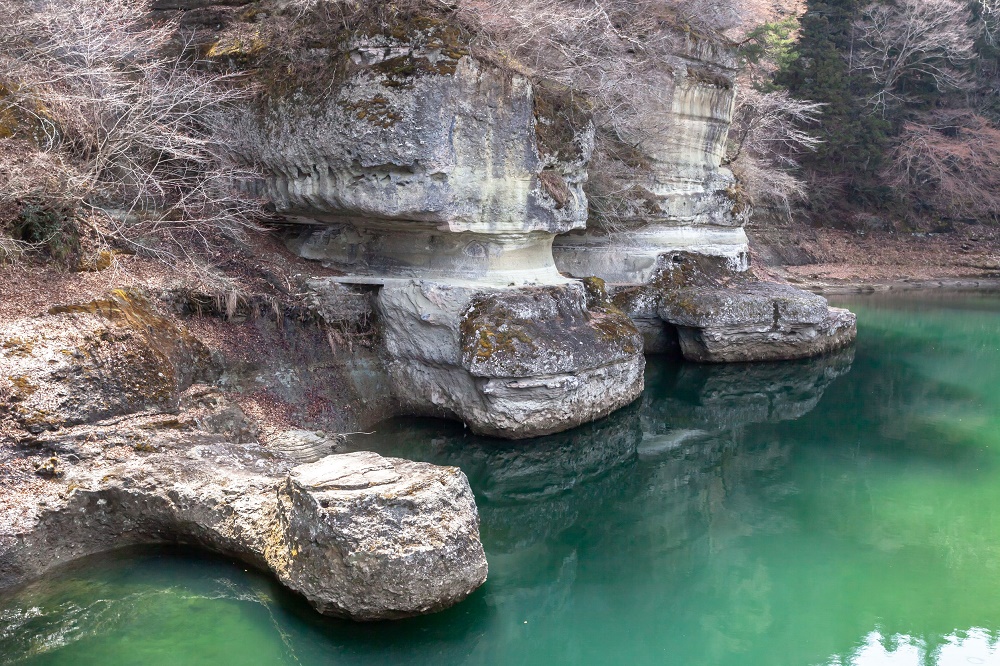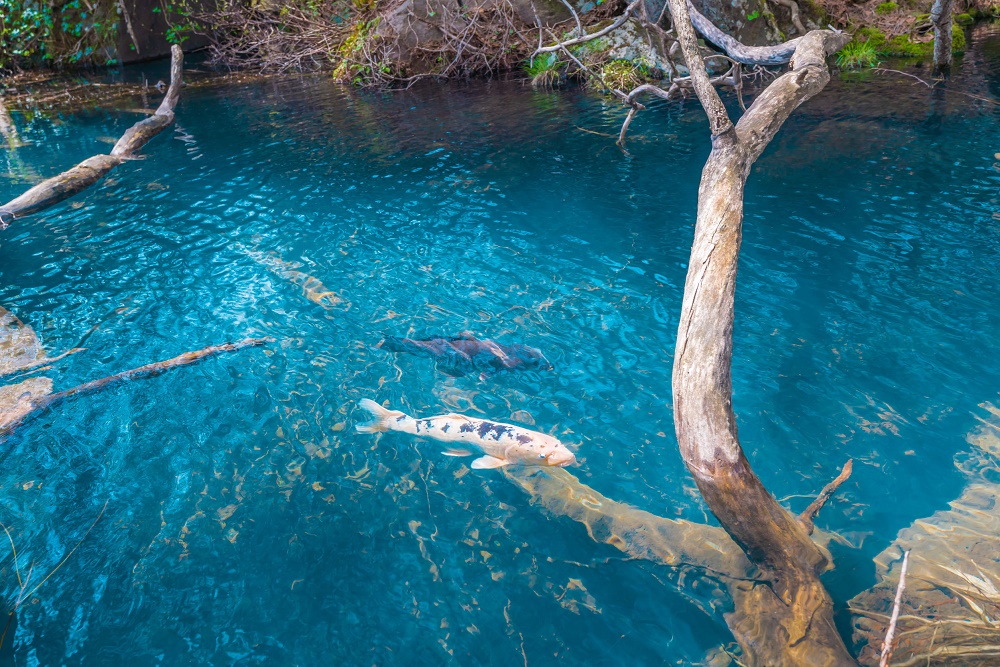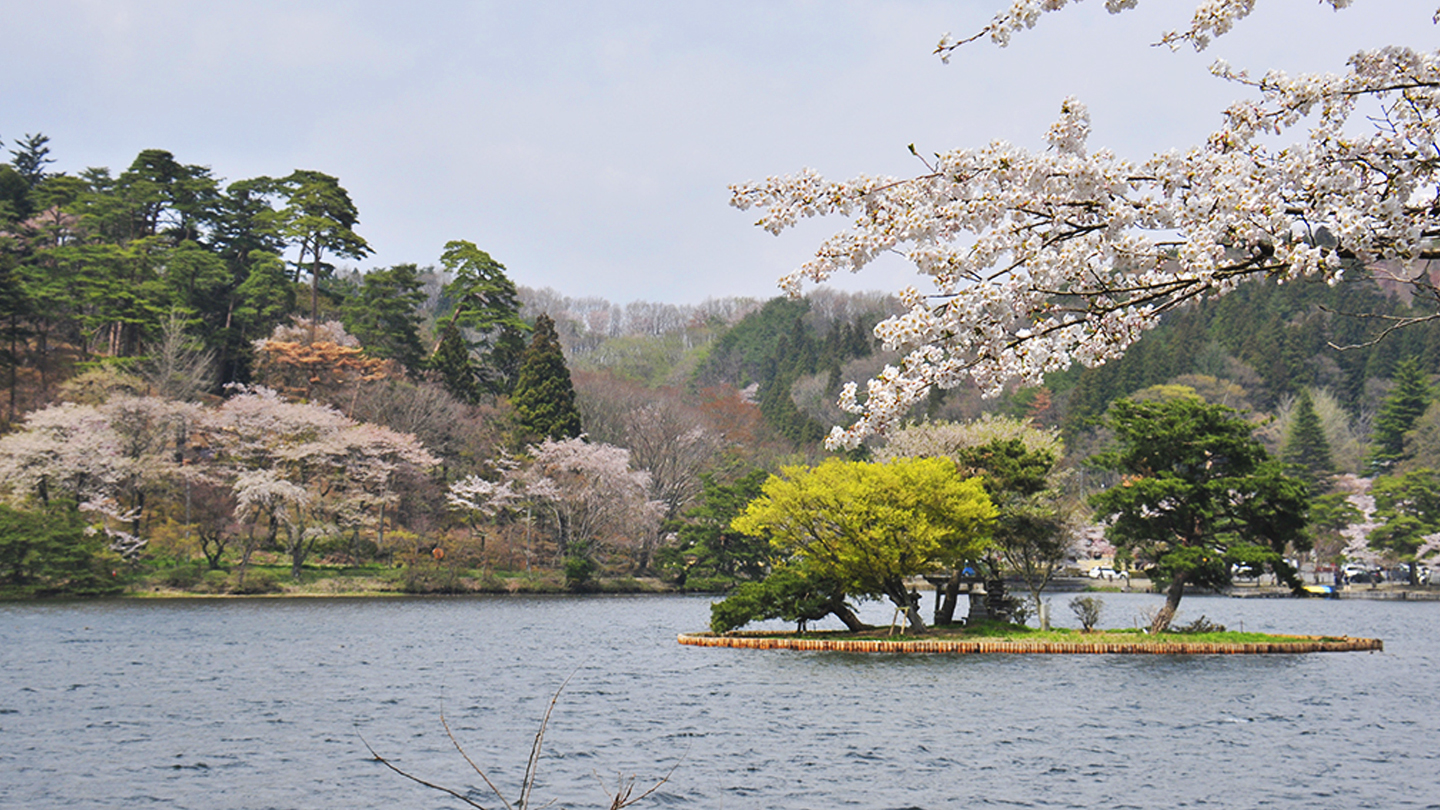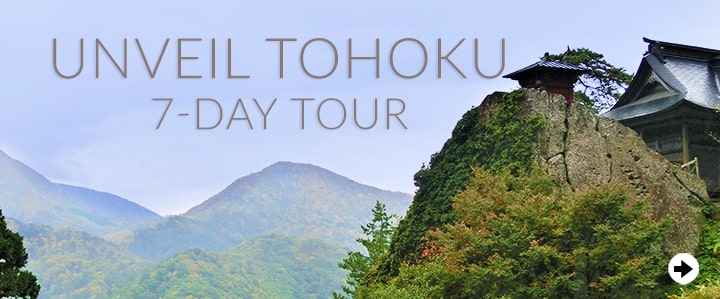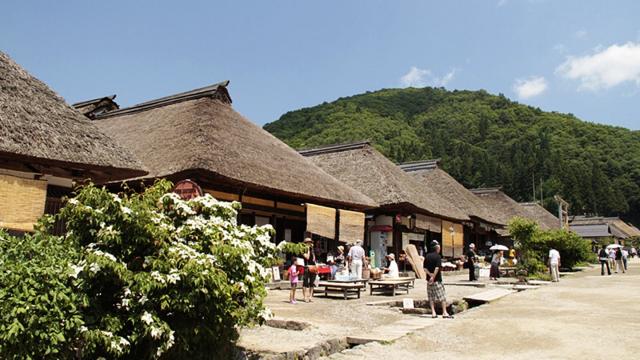Fukushima, Japan Jan. 30 Thurs 2:25PM
About Fukushima
Since the 2011 earthquake and tsunami, the name Fukushima has become synonymous with the disaster. However, Fukushima is so much more than that. Fukushima is the beautiful landscapes it contains, the spring cherry blossoms, and the golden autumn leaves. Every area except the no entry-zone around the nuclear plant is safe to visit- only less than 2.4% of the area is still deemed unsafe (contaminated evacuation zone) as of 2018. During the reconstruction of Fukushima and the Tohoku area, tourism has been one of the most important sources of reparation for the prefecture and its people.
Although the tragic past of Fukushima has also been a big part in shaping Fukushima to what it is now and the resilience of the people and the place is something to be admired, the history is not all that Fukushima has to offer nor the only defining thing about it. Full of natural beauty and wonders, interesting culture, significant history, and interesting architecture, Fukushima is a hidden travel gem.
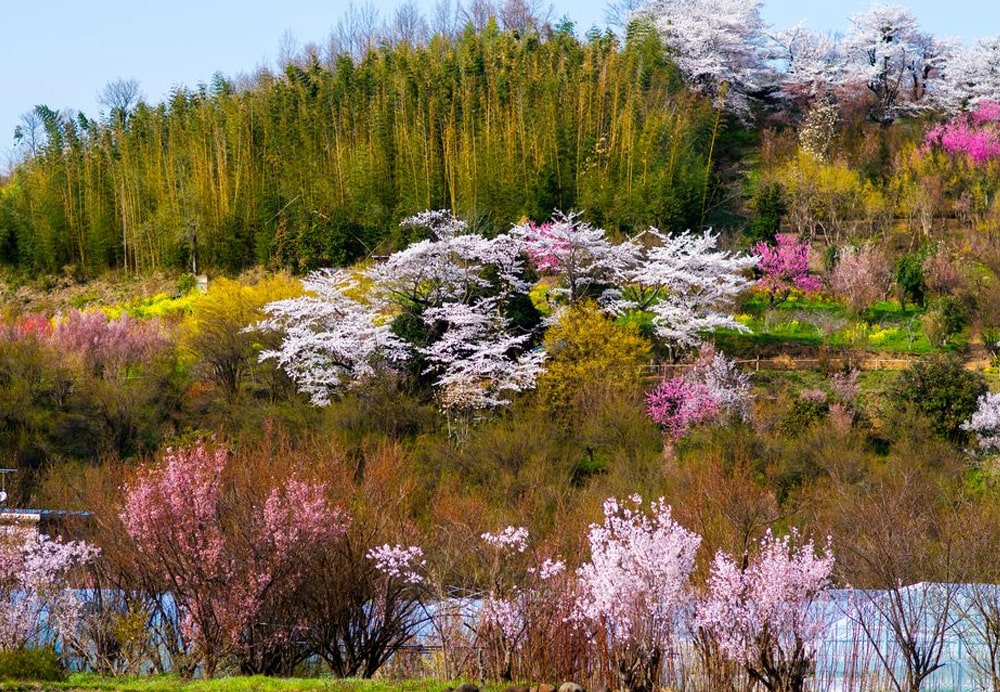
Fukushima Prefecture, or Fukushima-ken, is the third largest prefecture in Japan, and stretches from the Pacific coast to Japan's mountainous interior. It is located just an hour away from Tokyo by bullet train, and the area is well-known for its beautiful landscapes, including mountains, volcanoes, hot springs and fall colors.
Famous Sights:
Nanko Park
A stunning contrast of beautiful cherry blossoms and snowy landscape
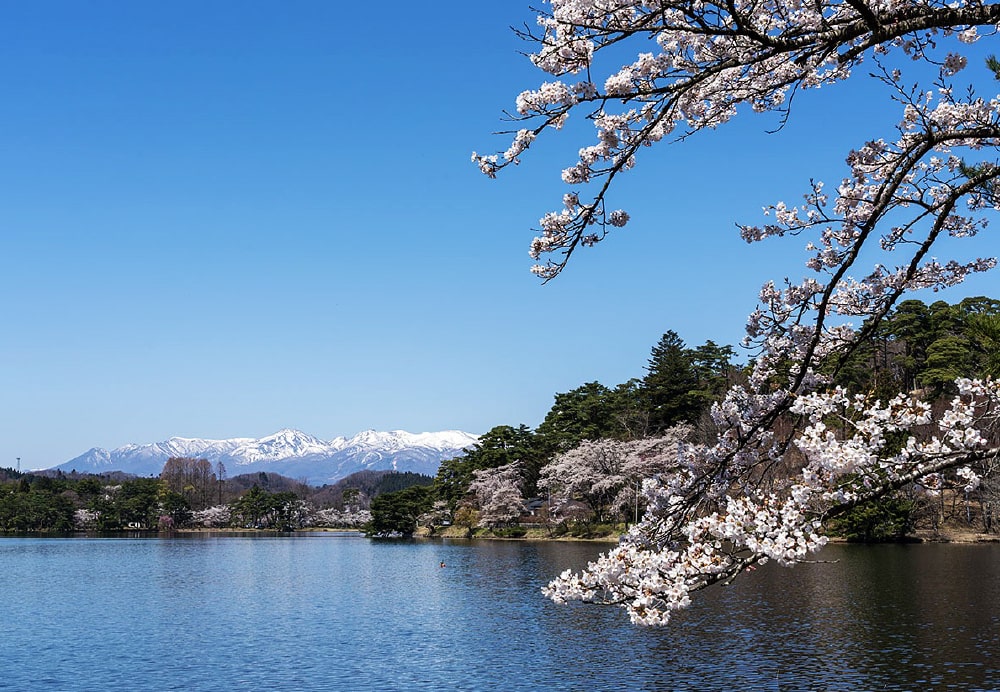
In 1801, Matsudaira Sadanobu (the Lord of Shirakawa / the chief councilor of the Edo Shogunate) constructed a recreational area which was to be open to everybody - regardless of status or family background. This area turned into Nanko Park, which is considered to be Japan's oldest public park.
The park includes “Nanko Shrine” where Matsudaira Sadanobu is enshrined as a deity, “Suirakuen” which is an authentic Japanese garden, and a tea house "Kyorakutei" that reflects Sadanobu's philosophy.
The lakeside is home to approximately 800 Someiyoshino cherry trees, azaleas, pine trees, and maples, providing a stunning contrast of beautiful cherry blossoms in the Spring, fresh greenery in the early Summer, colorful autumn leaves in the Fall, and incredible snow in the Winter on the Nasu Mountain Range. Visitors can enjoy 2 seasons at the same time looking out at the cherry blossoms and the snowy landscape while eating delicious "Nanko Dango (sweet rice dumplings)" sold at shops by the lake.
Azuma Kofuji (Azuma's Little Mt.Fuji)
Magnificent hikes and beautiful views at an active volcano
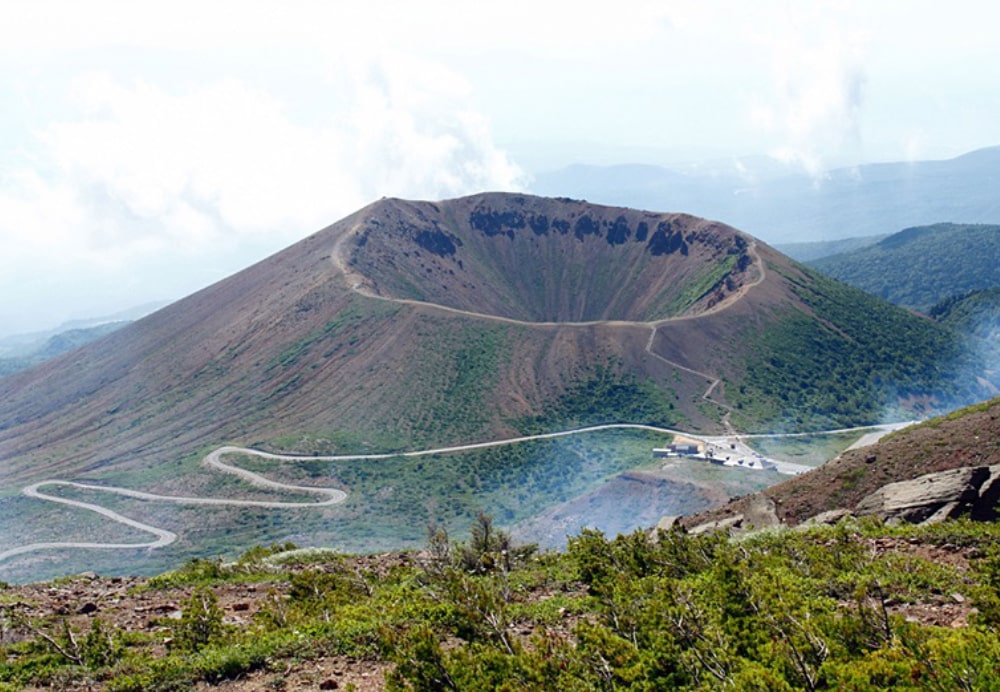
Like a smaller version of the perfectly symmetrical Mt. Fuji, the famous Azuma Kofuji has long been loved by the locals. Climbing the trail (stairs) from the parking lot takes about 10 minutes, and the view of the crater, which is about 1640 feet (500 meters) in diameter, is breathtaking, with a height difference of about 230 feet (70 meters) to the crater floor.
Higashiyama Onsen
Unique hot spring festival “Higashiyama Onsen Oyukake Matsuri”
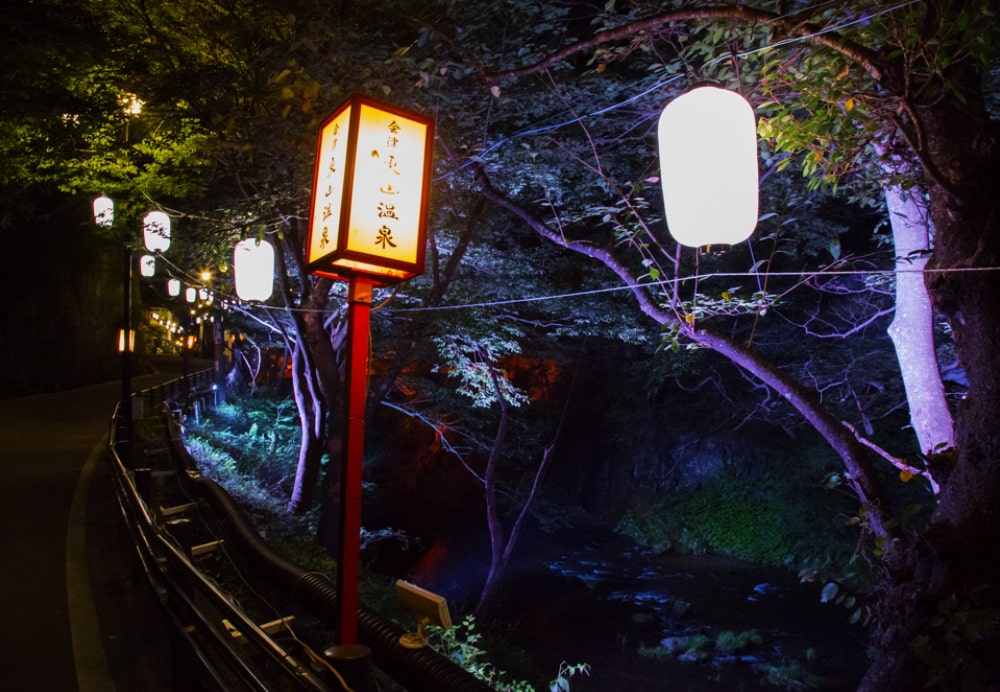
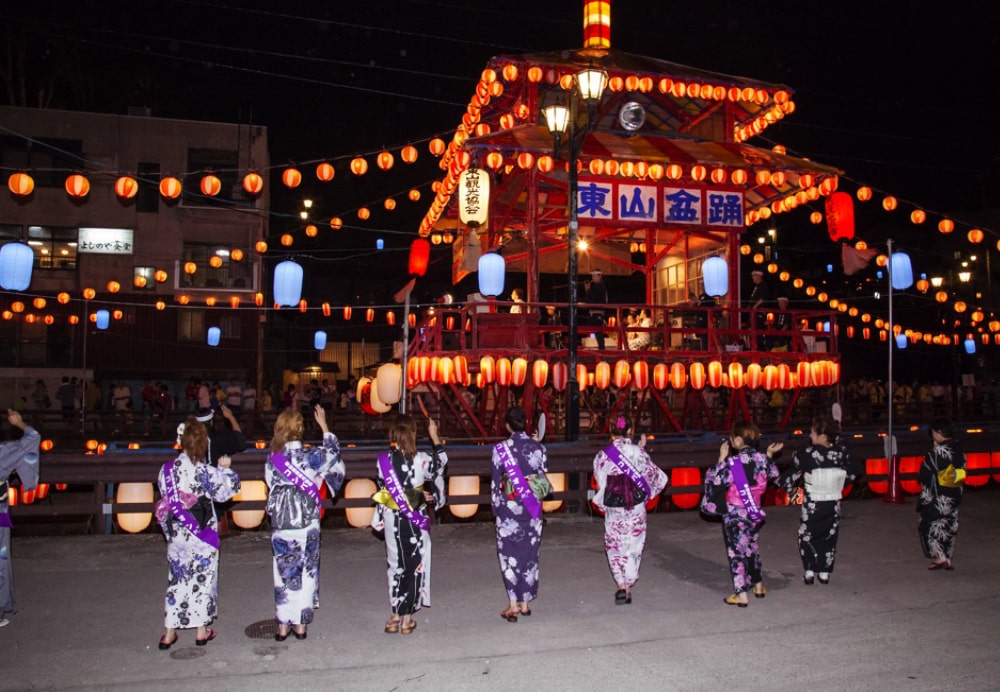
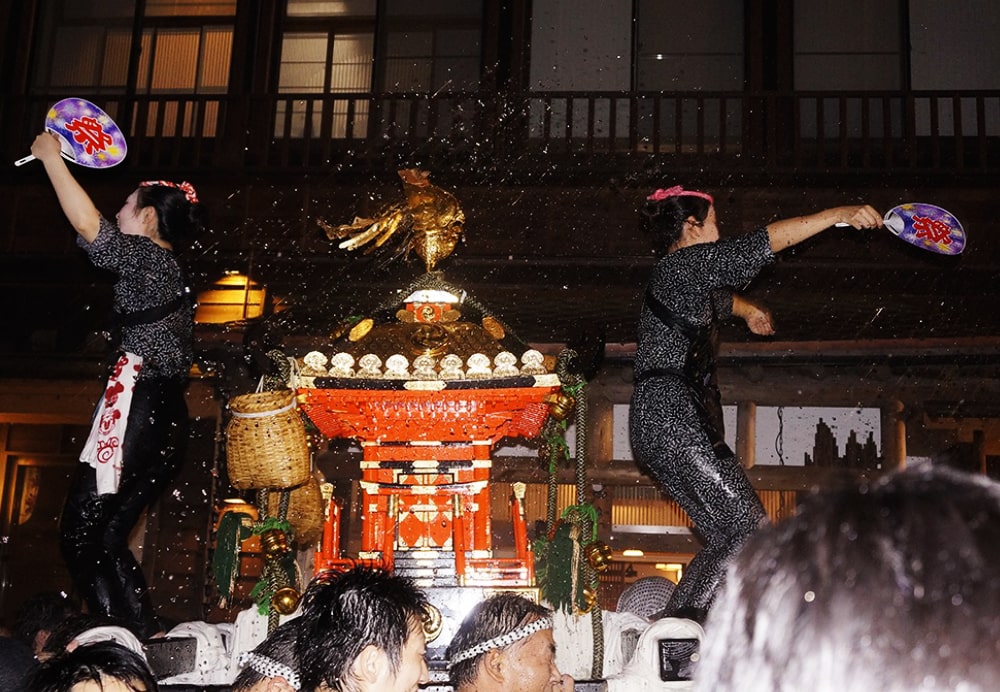
Higashiyama Onsen, a quiet mountain hot spring town located just a five-minute drive from the center of Aizuwakamatsu City, holds a very exciting festival called "Higashiyama Onsen Hot Spring Festival (Oyukake Matsuri)" at the beginning of August every year. This is a unique festival in which young people, Geigi (female Japanese performing artists), and children from the local area carry Mikoshi (portable shrines) through the streets, while guests staying at the area hotels splash hot spring water on them. Legend says that washing money in a hot spring brings happiness. During the festival, five-yen coins washed in the hot springs are thrown out from the portable shrine toward the guests.
Tsubakuro Valley (Fudosawa Bridge)
Breathtaking Autumn Colors one of the Azuma Hakkei (Azuma's Top Eight Sceneries)
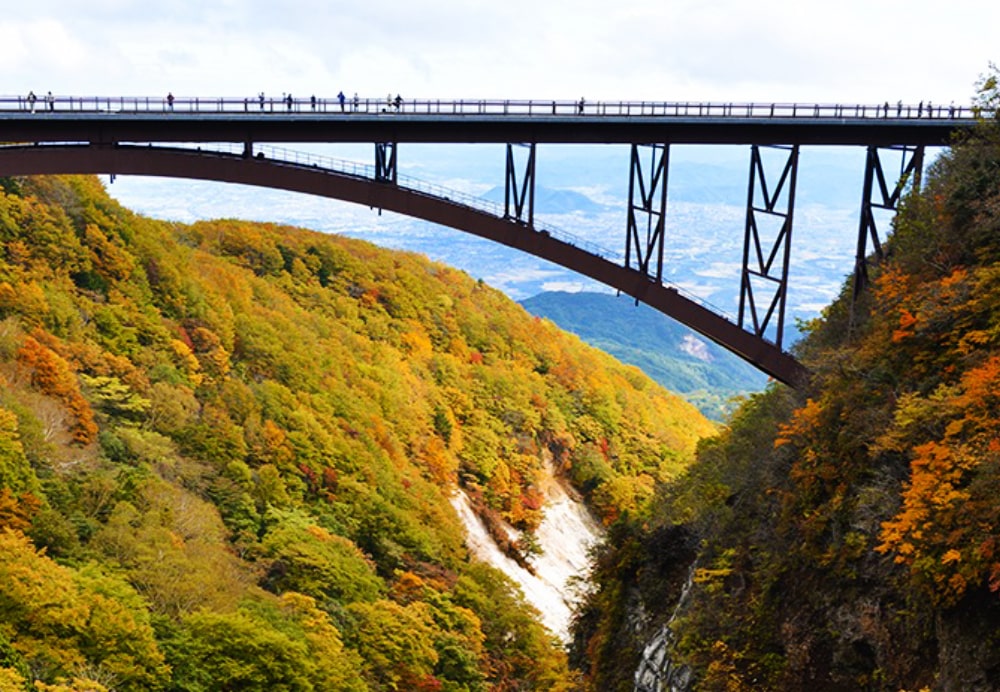 Fudosawa Valley is a viewing point on the mountain sightseeing road Bandai-Azuma Skyline. It is one of the "Azuma Hakkei (Azuma's Top Eight Sceneries)" a scenic spot that attracts many tourists in the fall for its autumn colors. The Fudosawa Bridge is 558 feet (170 meters) long and 276 feet (84 meters) high, spanning the "Tsubakuro Valley," and the view from the bridge is breathtaking. The "Tsubakuro Valley" was named after the Asian house martins that once flew over it. You will also be treated to a magnificent panoramic view of the city of Fukushima.
Fudosawa Valley is a viewing point on the mountain sightseeing road Bandai-Azuma Skyline. It is one of the "Azuma Hakkei (Azuma's Top Eight Sceneries)" a scenic spot that attracts many tourists in the fall for its autumn colors. The Fudosawa Bridge is 558 feet (170 meters) long and 276 feet (84 meters) high, spanning the "Tsubakuro Valley," and the view from the bridge is breathtaking. The "Tsubakuro Valley" was named after the Asian house martins that once flew over it. You will also be treated to a magnificent panoramic view of the city of Fukushima.
Inawashiro Ski Resort
Enjoy skiing and snowboarding at this picturesque ski resort
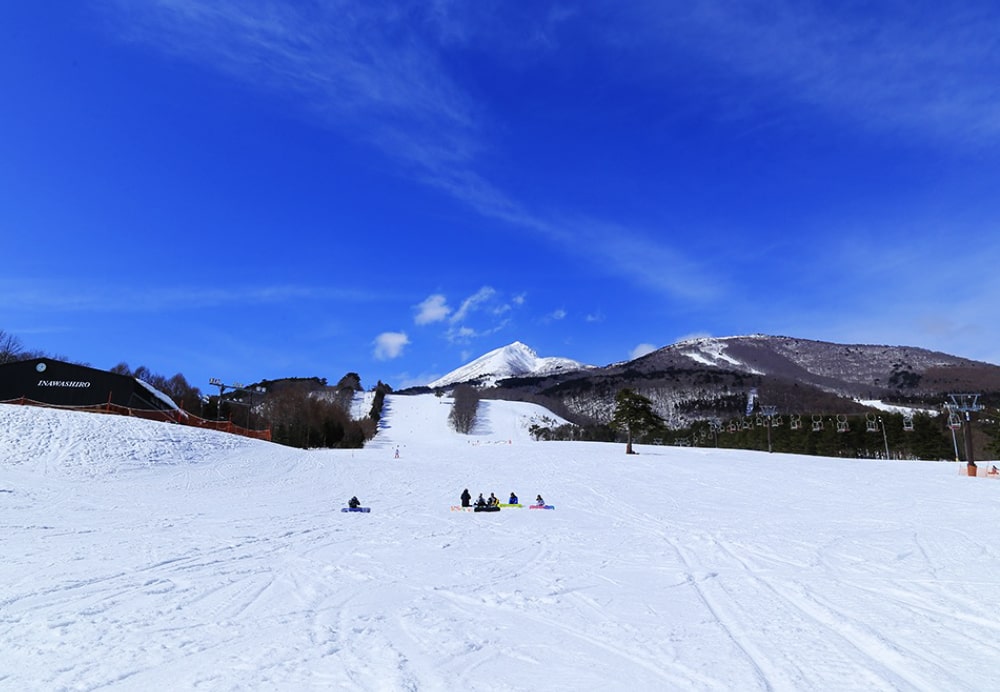 Fukushima is known as a popular ski resort in Japan. One of the top ranking ski resorts "Inawashiro Ski Resort" is located in Bandai Asahi National Park, surrounded by the spectacular views of Mt. Bandai and Inawashiro Lake, and can be enjoyed by beginners and advanced skiers alike. When the weather is nice, you can see Lake Inawashiro and the sea of clouds from the ski slopes. There is also the "Bell of Happiness" which brings luck to those who ring it and has become a super-instagrammable spot! In addition, many other events such as snow fireworks, cosplay festivals, and free moguls lessons for elementary and junior high school students are also held.
Fukushima is known as a popular ski resort in Japan. One of the top ranking ski resorts "Inawashiro Ski Resort" is located in Bandai Asahi National Park, surrounded by the spectacular views of Mt. Bandai and Inawashiro Lake, and can be enjoyed by beginners and advanced skiers alike. When the weather is nice, you can see Lake Inawashiro and the sea of clouds from the ski slopes. There is also the "Bell of Happiness" which brings luck to those who ring it and has become a super-instagrammable spot! In addition, many other events such as snow fireworks, cosplay festivals, and free moguls lessons for elementary and junior high school students are also held.
Foods:
Kitakata Ramen
One of the Big 3 Local Ramen of Japan
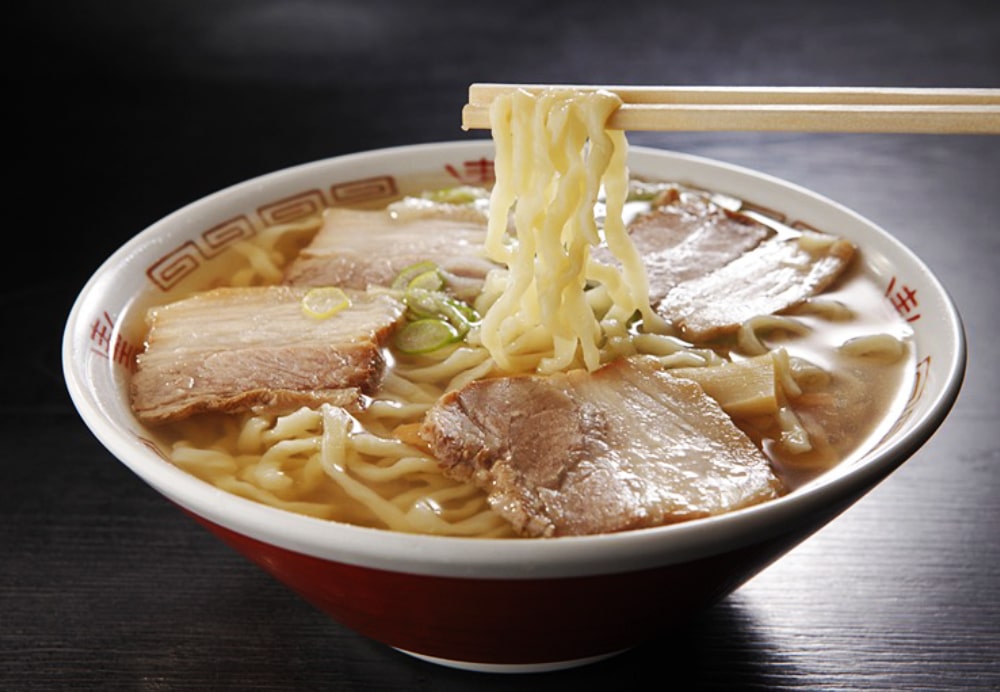
Kitakata ramen is a local ramen that originated in Kitakata City, Fukushima Prefecture in the late Taisho period (1912-1926), and is one of the Big 3 Ramens of Japan. The other two are Sapporo and Hakata ramen, and they all have one thing in common: they started at yatai stalls. There are over 100 Kitakata ramen restaurants within the city, and ramen lovers from all across Japan come to taste the original here. Kitakata ramen has uniquely thick (3-4 mm), chewy noodles, and the soup is usually soy sauce-based, but each restaurant offers its own unique flavor, including salt and miso flavors.
Kozuyu
Kozuyu is a tasty soup dish with vegetables usually eaten during special occassions and is traditional to Aizu, a region in Fukushima.
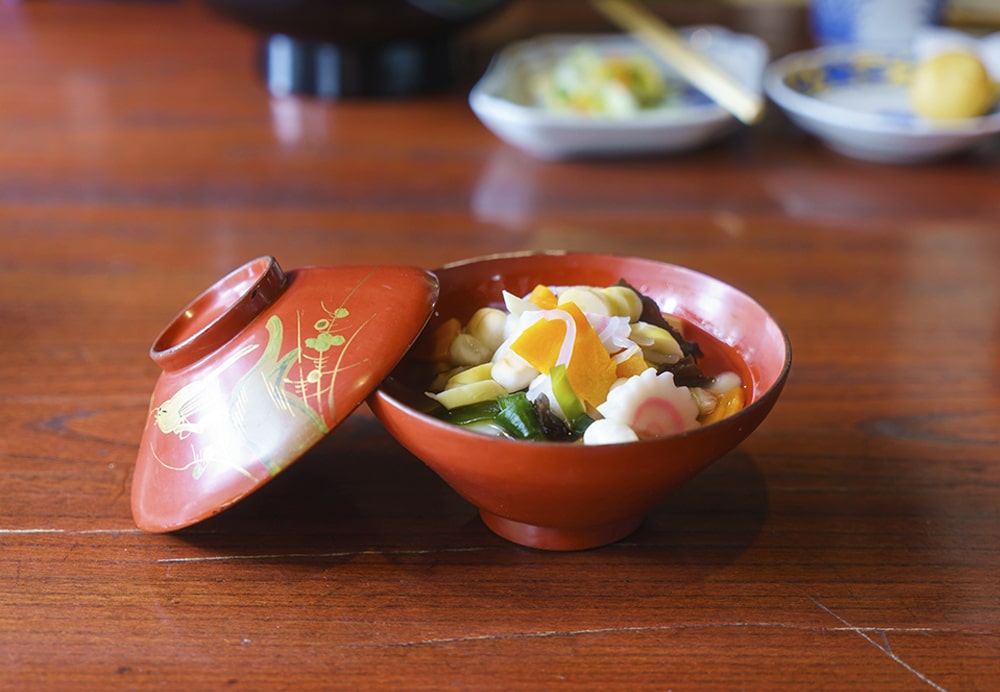
Soba
Soba is known to be a must-try food in Fukushima! Specifically, aizu soba, buckwheat noodles that are dipped in sauce, is a notable type. Aizu is said to be the city of soba to some, so these noodles are a must try!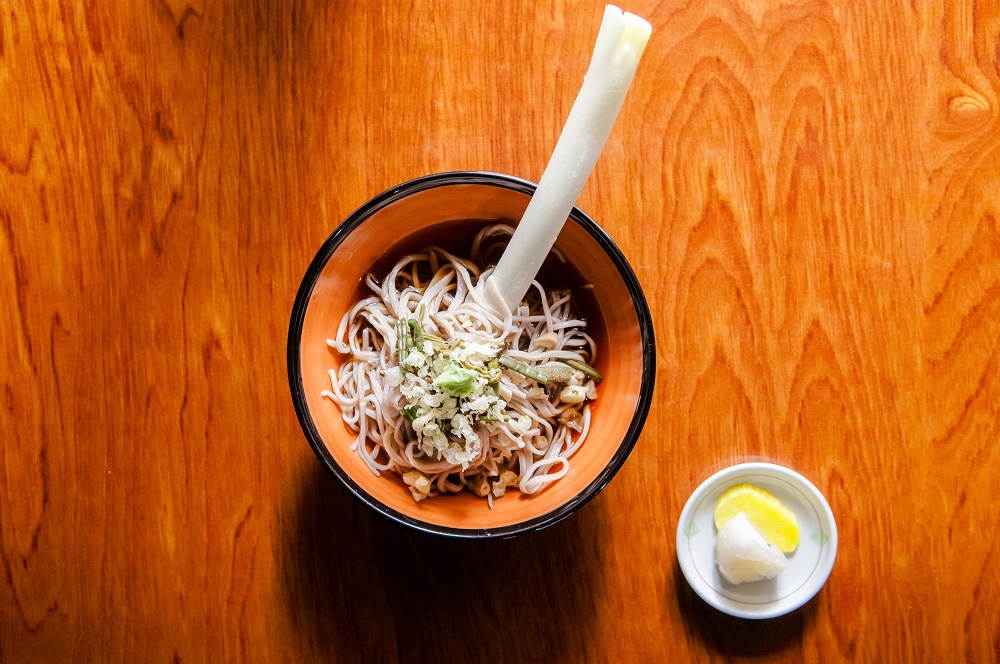
Other beautiful and notable sites of Fukushima Prefecture:
